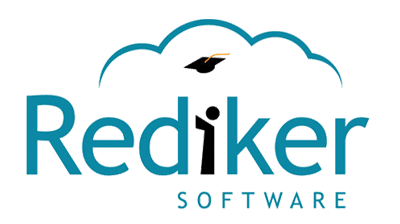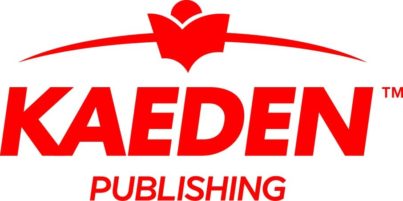By Andrea Alcala-Vasquez
Software has become critical in the modern classroom to support student engagement and teacher effectiveness. The K-12 teaching and learning environment continues to evolve and respond to latest challenges like effective distance learning brought on by public health crises. And, in America, increasing political polarization around critical race theory, student social emotional instruction and need for emergency response to classroom emergencies. How do Christian schools choose the best solutions?
Types of Software
Today’s students have never known a world without the ubiquitous glow of a computer screen. It’s impossible to classify it all, but here’s a high-level grouping of software available:
Courseware – A portmanteau of coursework and software, courseware has been around as long as computer labs for students. It includes software designed to instruct students. The definition of courseware now includes software delivered online. But when software development companies refer to courseware, they are often describing a single course (of any subject), often bundled with assessment materials for that course.
Assessment Software – In an effort to reduce paper waste and the logistical nightmares that come with printing out reams of tests, assessment systems have become a focus for schools and districts. Assessment software is designed to deliver tests or quizzes, record answers and score the results. It is how student grades are tracked over the course of a school year. There are many open-source and free options available to educators.
Reference Software – Gone are the days of dictionary and encyclopedia software. Reference software has gone completely online. Services like Wikipedia, Google Scholar and Lexis offer a far greater compendium of knowledge than any one piece of reference software of yesterday could match.
Learning Management and Social Learning Platforms – Learning management systems, or LMSes, have their origins in higher education. But even today in K-12, they can now be often the virtual electronic heart of a class, or with more advanced systems, the virtual online hub of a whole school or district. Educators here can choose from popular open source systems of the past, free systems like Google Classroom, or commercial, more full-fledged systems built just for K-12.
Free vs. Freemium vs. Paid Solutions
Many companies give away products that educators can use for free. In a so-called “freemium” model, some of these companies offer premium versions with expanded features in exchange for a subscription cost.
On the surface, free sounds good. Teachers get easy access to try systems without any centralized budgetary or IT approval. In many cases, users just create a user ID and log in. If they want to add student and parent access, they just create additional accounts, also for free. But, IT professionals and school administrators are starting to worry about the very real risks and pitfalls associated with free systems in education for five main reasons:
- Free systems usually aren’t very robust. Free solutions in education are usually relatively simple technology. The feature set is designed to minimize support costs instead of supporting sound pedagogy. So, district and state grading schemes, stranding, streaming, state standards and more are simply non-existent. Support for school or district wide reporting and data analysis is absent. And what region doesn’t have unique assessment and reporting standards?
- Free systems aren’t integrated with other systems. Free systems are typically not integrated with the school or district main student information system (SIS), the identity management system that controls logins across multiple applications, or any attendance database, report card system or resource scheduling system. Sometimes there’s no data sharing of assessment results into your online gradebook. It’s hard to connect to systems like this and do it in an elegant way, so very few free tools do.
Free systems often push the administration burden to teachers. Because they’re not connected to district systems, free sites typically have no knowledge of which students are in a given class or school. Teachers are often left with the challenge of inputting students and classes for a gradebook or student rewards system, for instance, and removing and adding students as they come and go. When it comes to parent communication, some teachers take on the burden of running their own email lists, managing updates themselves as parents and their email addresses change.
- What’s free today might not be in the future – or may even disappear. How to budget to maybe have to pay at some point for a tool you count on using today for free? What if there’s no money in your budget the year the vendor decides to start charging? What do you do? Stop using the system?
- You may find yourself paying an unexpected price. Users of social media like Facebook have been learning that if you’re not paying for a product or service, you’re the product. While there are guidelines in education and laws in many countries worldwide aimed at protecting student data, even big companies like Google that should know better have made mistakes. And, if Google can mess up, how many other companies may cut corners as they try to monetize teacher and student information because that’s their only path to revenue?
At some point, free solutions can suddenly come at an unexpected cost. That cost may be through licensing fees, fees for upgrades, or service fees. Maybe advertising you may not want. Or perhaps that cost comes in the form of lost data when a company goes away because it couldn’t stay in business and refused to give you a way to export your data.
IT personnel sometimes get involved to police teachers’ classroom applications to mitigate schools’ legal exposure. How many well-meaning teachers understand the potential for litigation for accidentally sharing a student’s academic information with someone they thought was a parent or guardian? Or maybe who was a parent at one time, but isn’t any longer after a court ruling? Teachers shouldn’t be expected to shoulder the added burden of knowing about and managing critical information that the school office or district is already managing.
The takeaway here is clear. “Free” classroom software solutions can cost real time, real money and real results. When looking for future systems, place special emphasis on platforms that integrate with your legacy applications, such as student information systems, so that teachers aren’t shouldering the burden of data entry.
And finally, plan for properly managed school classroom software rollouts to ensure that all students and teachers get the benefits of modern tools, not just early adopting teachers and their students.
Andrea Alcala-Vasquez is marketing manager for Edsby, maker of the Edsby social learning and student well-being system for K-12 and the Unison education data platform for states, provinces and countries, www.edsby.com.







